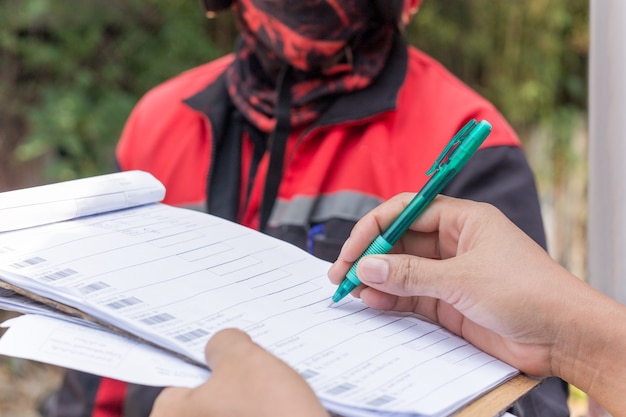Disaster Assistance: Your FEMA Guide After a Natural Disaster

Disaster assistance, especially through FEMA (Federal Emergency Management Agency), is crucial for recovery; understanding eligibility, application steps, and required documentation is essential to access aid after a natural disaster.
When a natural disaster strikes, the path to recovery can seem overwhelming. Navigating the process of obtaining disaster assistance is a critical step. This guide offers straightforward advice on how to apply for FEMA aid, ensuring you understand each step to get the help you need to rebuild.
Understanding FEMA Disaster Assistance
FEMA, or the Federal Emergency Management Agency, provides aid to individuals and households after a major disaster is declared by the President. This assistance can cover a range of needs, from temporary housing to repairing or replacing damaged property.
Understanding the scope of FEMA’s help is the first step in securing assistance for your recovery. It’s important to know what types of losses FEMA covers and how they can support you in rebuilding your life.
Types of Assistance Available
FEMA offers several types of assistance, each designed to address specific needs after a disaster:
- Housing Assistance: Helps with temporary housing expenses, such as rent for a different place to live if your home is uninhabitable.
- Home Repair Assistance: Provides funds to repair damage to your primary residence caused by the disaster.
- Personal Property Assistance: Helps replace essential household items, such as furniture, appliances, and clothing.
- Other Needs Assistance: Covers other disaster-related expenses, like medical, dental, or funeral costs.
Each type of assistance has its own eligibility criteria and limitations. It’s important to understand the requirements for each program to increase your chances of approval.
FEMA’s disaster assistance aims to provide a safety net for those affected, helping them start on the path to recovery. Knowing what is available is a crucial first step.

Determining Your Eligibility for FEMA Aid
Before you begin the application process, it’s crucial to determine whether you meet FEMA’s eligibility criteria. Several factors can influence your eligibility and understanding these factors is key.
Eligibility isn’t solely based on the damage to your property. FEMA considers various aspects of your situation, including insurance coverage, citizenship status, and whether the disaster has been declared.
Key Eligibility Requirements
To be eligible for FEMA disaster assistance, you typically need to meet the following requirements:
- Citizenship or Qualified Alien Status: You must be a U.S. citizen, non-citizen national, or qualified alien.
- Primary Residence: The damaged property must be your primary residence.
- Insurance Coverage: You must not have sufficient insurance coverage to meet your disaster-related needs. FEMA provides assistance only for needs not covered by insurance.
- Disaster Declaration: The disaster must have been declared by the President for your area to be eligible for FEMA aid.
Meeting these basic requirements is essential to begin the application process. Ensuring you have the necessary documentation to prove your eligibility will also streamline your application.
Understanding these requirements upfront can save time and frustration, helping you focus on gathering the information you need to apply effectively.
Gathering Necessary Documentation
To ensure a smooth application process, it’s vital to gather all the necessary documentation before you apply. Having the correct paperwork ready will help FEMA quickly assess your needs and process your application.
The documentation helps verify your identity, residency, and the extent of the damage. Providing complete and accurate information will significantly speed up the review process.
Essential Documents to Collect
Here are some of the key documents you should gather:
- Proof of Identity: Driver’s license, passport, or other government-issued ID.
- Proof of Residency: Utility bills, lease, or mortgage statements showing your address.
- Insurance Documents: Policies and claim information to demonstrate coverage and any settlements received.
- Damage Documentation: Photos, videos, and repair estimates to illustrate the extent of the damage to your property.
Collect as much supporting documentation as possible, even if you’re unsure if it’s needed. Additional information can help FEMA understand your situation more clearly.
Having these documents ready will not only speed up your application but also demonstrate your preparedness and commitment to providing accurate information.
Applying for FEMA Aid: Step-by-Step
The application process for FEMA aid involves several key steps, from initially registering to following up on your claim. Understanding each step ensures you complete the process accurately and effectively.
FEMA provides multiple avenues for applying, making it easier for individuals with varying access to technology. Choose the method that best suits your needs and resources.
Methods to Apply for FEMA Assistance
You can apply for FEMA aid through the following methods:
- Online: Visit DisasterAssistance.gov to complete the application form.
- Phone: Call FEMA’s helpline at 1-800-621-FEMA (3362) (TTY: 1-800-462-7585).
- Mobile App: Download the FEMA app on your smartphone.
- Disaster Recovery Center: Visit a local Disaster Recovery Center (DRC) for in-person assistance.
Regardless of the method you choose, make sure you have all your documentation ready before you start. This will ensure a smoother and faster application process.
Applying correctly the first time helps avoid delays and potential complications. Accurate and complete information is vital for a successful application.
Understanding the FEMA Inspection Process
After submitting your application, FEMA may schedule an inspection of your damaged property to verify the extent of the damage. Knowing what to expect during this inspection can help you prepare and ensure an accurate assessment.
The inspection is a critical part of the review process. It allows FEMA to assess the damage firsthand and determine the appropriate level of assistance you may be eligible for.
Preparing for the FEMA Inspection
Here are some tips to prepare for the FEMA inspection:
- Keep Damaged Items: Do not dispose of damaged items until after the inspection. These items serve as evidence of the damage.
- Document Everything: Take additional photos and videos of the damage to supplement your initial documentation.
- Be Present: If possible, be present during the inspection to answer any questions the inspector may have.
- Ask Questions: Don’t hesitate to ask the inspector questions about the process and what to expect next.
Being well-prepared for the inspection can help ensure an accurate assessment and streamline the review of your application. Accurate information is key.
The inspection process is designed to help FEMA understand the full impact of the disaster on your property, so your cooperation and preparation are essential.

Appealing a FEMA Decision
If you disagree with FEMA’s decision regarding your application, you have the right to appeal. Understanding the appeal process and how to build a strong case is essential.
Appealing a decision can be an important step if you believe FEMA’s assessment does not accurately reflect the extent of your damage or your eligibility.
Steps to File an Appeal
Here are the steps to file an appeal with FEMA:
- Review the Decision Letter: Understand the reasons for FEMA’s decision and identify any areas of disagreement.
- Gather Additional Documentation: Collect any new or additional information that supports your appeal, such as repair estimates or insurance claim denials.
- Write a Letter of Appeal: Clearly explain why you disagree with FEMA’s decision and provide supporting documentation.
- Submit Your Appeal: Send your appeal letter and documentation to FEMA within 60 days of the date on the decision letter.
A well-prepared appeal, supported by accurate documentation, can increase your chances of a successful outcome.
The appeal process is designed to ensure fairness and accuracy in FEMA’s assistance decisions, so don’t hesitate to exercise your right to appeal if necessary.
Additional Resources for Disaster Recovery
In addition to FEMA, numerous other organizations and resources can provide support during disaster recovery. Knowing these resources can help you access a broader range of assistance.
Disaster recovery often requires a community effort, and many organizations are dedicated to helping individuals and families rebuild their lives after a disaster.
Available Resources for Disaster Survivors
Here are some additional resources that can assist with disaster recovery:
- American Red Cross: Provides emergency assistance, shelter, food, and other support services.
- United Way: Connects individuals with local resources and assistance programs.
- Small Business Administration (SBA): Offers disaster loans to homeowners, renters, and businesses.
- Local Community Organizations: Many local charities and non-profits provide assistance to disaster survivors.
Exploring these resources can provide additional support and help you navigate the complex recovery process.
Remember, you are not alone in your recovery journey. Many organizations are available to help you rebuild your life after a disaster.
| Key Point | Brief Description |
|---|---|
| ✅ Eligibility | Citizenship, primary residence, and insufficient insurance are key eligibility factors. |
| 📝 Documentation | Gather proof of identity, residency, insurance, and damage to streamline your application. |
| 📱 Application | Apply online, by phone, via the FEMA app, or at a Disaster Recovery Center. |
| ⚖️ Appeals | You have the right to appeal FEMA’s decision within 60 days of the decision letter. |
Frequently Asked Questions (FAQ)
▼
FEMA provides aid for housing, home repairs, personal property replacement, and other disaster-related needs such as medical and funeral expenses for eligible applicants.
▼
The deadline to apply for FEMA assistance is typically 60 days from the date of the disaster declaration. Always check the specific deadline for your declared event.
▼
FEMA provides assistance for uninsured or underinsured losses. You must first file a claim with your insurance company before applying for FEMA aid to cover any gaps.
▼
You have the right to appeal FEMA’s decision. You must submit your appeal within 60 days of the date on your decision letter, providing additional documentation to support your claim.
▼
No, FEMA disaster assistance is not considered taxable income. It is designed to help you recover from a disaster and is not subject to federal income tax.
Conclusion
Navigating the FEMA application process can seem challenging, but understanding each step and gathering the necessary documentation can significantly improve your chances of receiving the aid you need to rebuild your life. Remember to explore all available resources and don’t hesitate to seek assistance from support organizations. Your recovery journey is a process, and help is available every step of the way.
